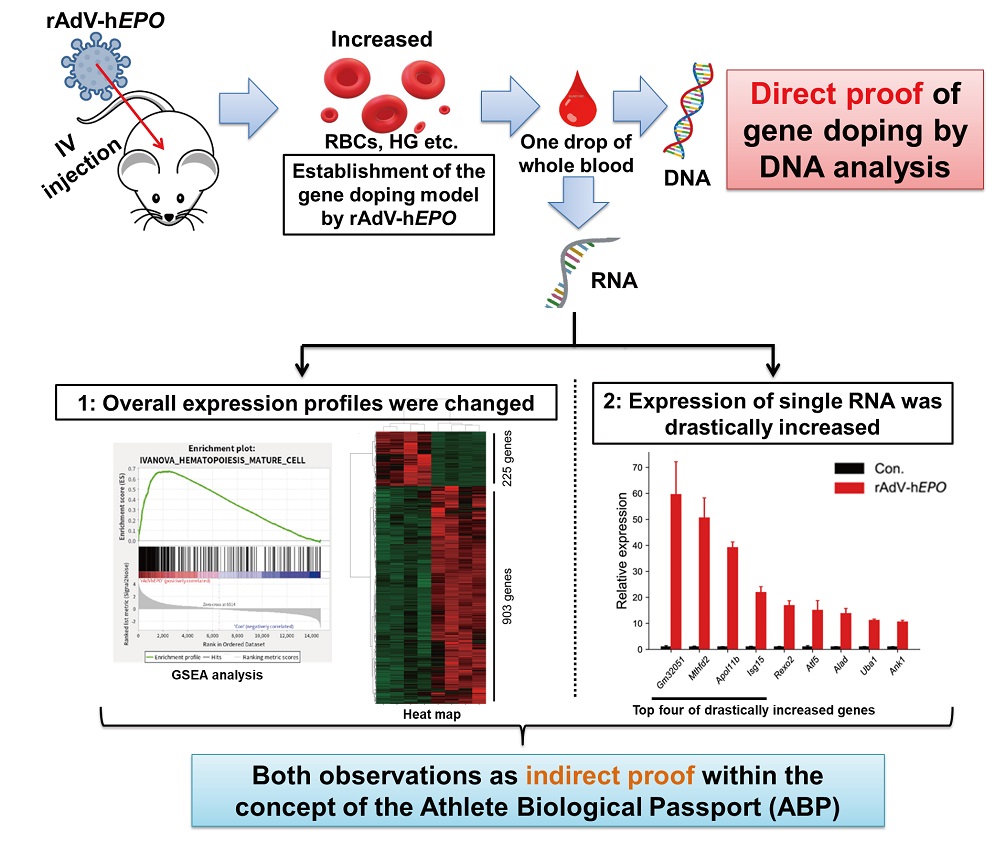Preprint
Article
Proof of Gene Doping in a Mouse Model with a Human Erythropoietin Gene Transferred Using an Adenoviral Vector
Altmetrics
Downloads
374
Views
367
Comments
0
A peer-reviewed article of this preprint also exists.
supplementary.zip (603.89KB )
This version is not peer-reviewed
Submitted:
01 July 2021
Posted:
01 July 2021
You are already at the latest version
Alerts
Abstract
The World Anti-Doping Agency (WADA) has prohibited gene doping in the context of progress in gene therapy. In addition, there is a risk of the EPO gene being applied in gene doping among athletes. Along with this, development of a gene-doping test has been underway in worldwide. Here, we had two purposes: to develop a robust gene doping mouse model using the human EPO gene (hEPO) transferred using recombinant adenovirus (rAdV) as a vector and to develop a detection method to prove gene doping using this model. The rAdV including the hEPO gene were injected intravenously to transfer the gene to the liver. After injection, the mice developed significantly increased red blood cell counts in whole blood and increased gene expressions of hematopoietic markers in the spleen, indicating successful development of the gene doping model. Next, we detected direct and indirect proof of gene doping in whole blood DNA and RNA using qPCR assay and RNA sequencing. Proof was detected in one drop of whole blood DNA and RNA over a long period; furthermore, the overall RNA expression profiles significantly changed. Therefore, we have advanced detection of hEPO gene doping in humans.

Keywords:
Subject: Biology and Life Sciences - Biochemistry and Molecular Biology
Copyright: This open access article is published under a Creative Commons CC BY 4.0 license, which permit the free download, distribution, and reuse, provided that the author and preprint are cited in any reuse.
MDPI Initiatives
Important Links
© 2024 MDPI (Basel, Switzerland) unless otherwise stated






